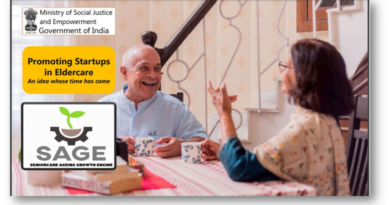Swasth Nari Sashakt Parivar Abhiyaan (SNSPA)
Contents
Swasth Nari Sashakt Parivar Abhiyaan (SNSPA)
Introduction and Overview
The Swasth Nari Sashakt Parivar Abhiyaan (SNSPA) is a landmark health initiative launched jointly by the Ministry of Health and Family Welfare (MoHFW) and the Ministry of Women and Child Development (MoWCD). This campaign is designed as a Jan Bhagidaari Abhiyaan (people’s participation campaign) that aims to strengthen healthcare services for women and children across India, with particular emphasis on improving access, quality care, and health awareness.
Timeline and Launch
The campaign was inaugurated on September 17, 2025, by Prime Minister Narendra Modi on his 75th birthday, symbolically aligning with his vision for empowered communities. The Abhiyaan runs until Gandhi Jayanti on October 2, 2025, making it a focused 16-day intensive health outreach program.
Scale and Scope
SNSPA represents the largest ever health outreach for women and children in the country, organizing more than one lakh health camps across India. These health camps are strategically located at:
Ayushman Arogya Mandirs
Community Health Centres
Other healthcare facilities
Anganwadis
Key Objectives
1. Enhance Women’s Health Through Comprehensive Screening and Services
The campaign prioritizes women’s health by providing comprehensive health screenings tailored to their specific needs. The screening services include:
Dermatological concerns
Hypertension
Anaemia
Reproductive health issues
Breast and cervical cancer
Diabetes
Tuberculosis (TB)
Sickle cell disease (SCD) with specialized counselling in tribal areas
The initiative involves medical specialists including gynaecologists, surgeons, and dentists, supported by district hospitals, to ensure accurate diagnosis and comprehensive follow-up care.
2. Promote Family Well-Being via Maternal and Child Care
SNSPA focuses extensively on maternal and child care to strengthen overall family well-being, integrating with existing initiatives like Poshan 2.0. Key services include:
Antenatal care (ANC) check-ups
Counselling services
Distribution of Mother and Child Protection (MCP) cards to monitor health progress
Immunization services for pregnant women and children conducted through Anganwadis and health centres
3. Foster Behaviour Changes Through Education
The Abhiyaan drives behavioral change by educating communities on essential health issues:
Menstrual hygiene
Balanced nutrition
Overall wellness
Breaking health-related taboos
Promoting hygiene practices
Educational programs are conducted through workshops and awareness programs at Anganwadis during Poshan Maah, facilitated by healthcare workers and community leaders.
4. Encourage Community Participation and Public Awareness
SNSPA fosters community participation through its Jan Bhagidaari approach, encouraging involvement from:
Private hospitals
Local leaders
Citizens
Nikshay Mitra volunteers
Implementation Strategy
The campaign employs a multi-faceted implementation approach:
1. Nationwide Health Camps with Real-Time Monitoring
Health camps are established across the country with systems for real-time monitoring of progress and outcomes.
2. Healthcare Worker Accountability via Self-Verification
Healthcare workers are held accountable through self-verification mechanisms to ensure quality service delivery.
3. Multi-Platform Outreach for Awareness
The campaign utilizes various platforms and media channels for comprehensive public awareness and outreach.
4. Volunteer and Nikshay Mitra Engagement
Community volunteers and Nikshay Mitras are actively engaged to support the campaign’s objectives and ensure community-level participation.
Strategic Alignment with Existing Schemes
SNSPA is strategically aligned with several existing government schemes and initiatives:
Mission Shakti (women’s safety and empowerment)
Poshan 2.0 (combating malnutrition among women and children)
Swachh Bharat Abhiyaan (building on health and sanitation momentum)
Related Government Schemes
The campaign complements other maternal and child health schemes:
Janani Shishu Suraksha Karyakram (JSSK)
Janani Suraksha Yojana (JSY)
Surakshit Matritva Aashwasan (SUMAN)
Mission Indradhanush
Pradhan Mantri Surakshit Matritva Abhiyan (PMSMA)
Pradhan Mantri Matru Vandana Yojana (PMMVY)
Suposhit Gram Panchayat Abhiyaan
Expected Impact and Outcomes
1. Enhanced Health Metrics
The campaign aims to improve overall health indicators for women and children through early detection and treatment of health conditions.
2. Increased Awareness of Hygiene and Wellness
Educational components are expected to significantly increase awareness about health, hygiene, and wellness practices among target populations.
3. Expanded Healthcare Access in Underserved Regions
The extensive network of health camps aims to reach underserved urban, rural, and tribal areas, expanding healthcare access.
4. Reduction in Maternal and Child Mortality
Through comprehensive maternal and child care services, the campaign aims to contribute to reducing maternal and child mortality rates.
Connection to National Vision
The Swasth Nari Sashakt Parivar Abhiyaan represents a significant step in India’s journey towards Viksit Bharat 2047, positioning women’s health and family empowerment at the heart of national development. The campaign builds on the success of flagship programs like Swachh Bharat Abhiyaan, Mission Shakti, and Poshan 2.0, demonstrating the government’s commitment to inclusive development.
By integrating comprehensive screenings, maternal and child care services, behavioral education, and community-driven initiatives, SNSPA addresses critical gaps in healthcare access and awareness while fostering sustainable behavioral changes across urban, rural, and tribal areas. The campaign empowers women as catalysts for change and lays the foundation for healthier, stronger families that drive India’s transformative growth.
Discover more from Simplified UPSC
Subscribe to get the latest posts sent to your email.


